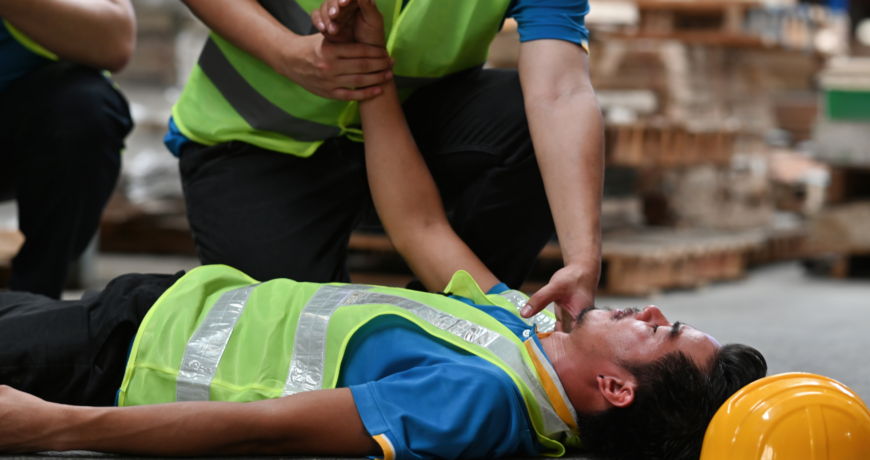“The Essential Role of First Aid Kits in Workplace Safety”
The Essential Role of First Aid Kits in Workplace Safety
In every workplace safety must be a primary concern, it is an important element that promotes safety in the workplace is the presence of first aid kits, and these kits provide the necessary supplies to treat various injuries and health emergencies, thereby fostering a culture of safety among employees. This article delves into critical aspects of first aid, their importance, and how they contribute to workers’ overall safety and well-being in all settings.
First Aid Kits
First Aid Kits are a collection of medical supplies and equipment that are essential for addressing minor injuries and emergencies. These kits are invaluable resources, designed to aid in the immediate treatment of injuries before professional medical help can be obtained. Various components of First Aid include bandages, antiseptics, gloves, scissors, and other medical items that are crucial for minor and major first aid procedures.
Importance of First Aid Kits in the Workplace
The importance of first aid kits in the workplace cannot be overstated. The existence of these groups serves several purposes:
In the event of an injury, having a First Aid Kit readily available enables an immediate response. This can significantly minimize the severity of an injury and sometimes can even save a life.
Displaying a commitment to safety through accessible First Aid can boost employee morale. Workers feel valued when they see that their employers are invested in their health and safety.
Many occupational health and safety regulations require workplaces to have First Aid. Compliance is not only legal but also an ethical obligation to ensure the well-being of all employees.
Regularly stocked and well-maintained First Aid contribute to the overall safety culture of an organization. Employees are more likely to adhere to safety measures when they know that good first aid practices are in place.
Types of First Aid Kits
There are different types of first aid, designed to meet the specific needs of different workplaces, and the recognition of these types ensures that each organization can choose the right group for its environment.
1. Basic First Aid Kits
These are the most common types of First Aid Kits, designed to treat minor injuries such as cuts, scrapes, and minor burns. They typically contain adhesive bandages, sterile gauze, alcohol wipes, and a pair of gloves, among other essential items.
2. Comprehensive First Aid Kits
Comprehensive First Aid Kits are equipped with a broader range of materials to address more severe injuries, including splints, burn treatment packs, and an assortment of bandages. These kits are often found in workplaces with higher accident rates, such as construction sites.
3. Specialized First Aid Kits
Some workplaces may require specialized kits tailored to specific hazards present in their environment. For instance, a laboratory may need a First Aid Kit that includes items for chemical spills, while a construction site may require a kit with materials to stabilize fractures.
Components of First Aid Kits
Understanding what goes into the first aid kit is necessary to ensure it meets the specific needs of the workplace, so we show the most important ingredients you can use here:
Adhesive Bandages: These are crucial for minor cuts and abrasions.
Gauze Pads and Adhesive Tape: Important for covering larger wounds and controlling bleeding.
Antiseptic Wipes and Creams: Help to clean wounds and prevent infections.
Sterile Gloves: Protect both the caregiver and the injured person.
Scissors and Tweezers: Useful for cutting tape, gauze, or removing splinters.
Instant Cold Packs: Provide immediate relief from swelling or pain.
Burn Treatment Supplies: Beneficial for addressing burn injuries, which can occur frequently in certain work environments.
The Role of Training in Effective Use of First Aid Kits
Having a First Aid Kit is not enough; training employees on how to use it effectively is equally crucial. Regular first aid training can empower employees to act confidently during emergencies. Some key points about training include:
Training should provide insights into common workplace injuries and the appropriate use of the First Aid Kits.
Designate specific individuals as first aid responders who are trained to handle emergencies and manage First Aid Kits.
Conduct emergency drills that involve the use of First Aid Kits to ensure employees are familiar with their location and use.
Regular Maintenance of First Aid Kits
One of the biggest mistakes in workplace safety is neglecting the maintenance of First Aid. Regular checks should be conducted to ensure that all items are in good condition and that supplies are replenished. Here’s how to maintain your First Aid effectively:
Schedule regular inventory checks to ensure all components are available and stocked.
Check expiration dates on medical supplies and replace any items that are out of date.
Ensure that First Aid are easily accessible to all employees and clearly marked.
The Impact of First Aid Kits on Workplace Culture
The presence and proper implementation of First Aid can significantly influence workplace culture. A proactive approach to health and safety promotes a better working atmosphere. Here’s how:
When employees are aware of First Aid procedures and feel safe, they are more likely to engage in their work.
Fast and effective management of injuries can lead to a decrease in employee absenteeism due to workplace-related injuries.
Companies that prioritize safety through effective First Aid Kits often enjoy a better reputation, attracting top talent.
Conclusion
In conclusion, First Aid Kits play a pivotal role in workplace safety. Their presence not only provides immediate assistance during emergencies but also fosters a culture of safety and well-being. By understanding the importance of these kits, ensuring proper maintenance, and educating employees on their usage, workplaces can significantly reduce the risk of severe injuries and enhance overall safety. In today’s fast-paced work environments, investing in First Aid is not merely a choice; it is a critical necessity for the protection and health of every employee. Implementing and advocating for First Aid can result in a safer, healthier, and more productive workplace for all.





There are no comments